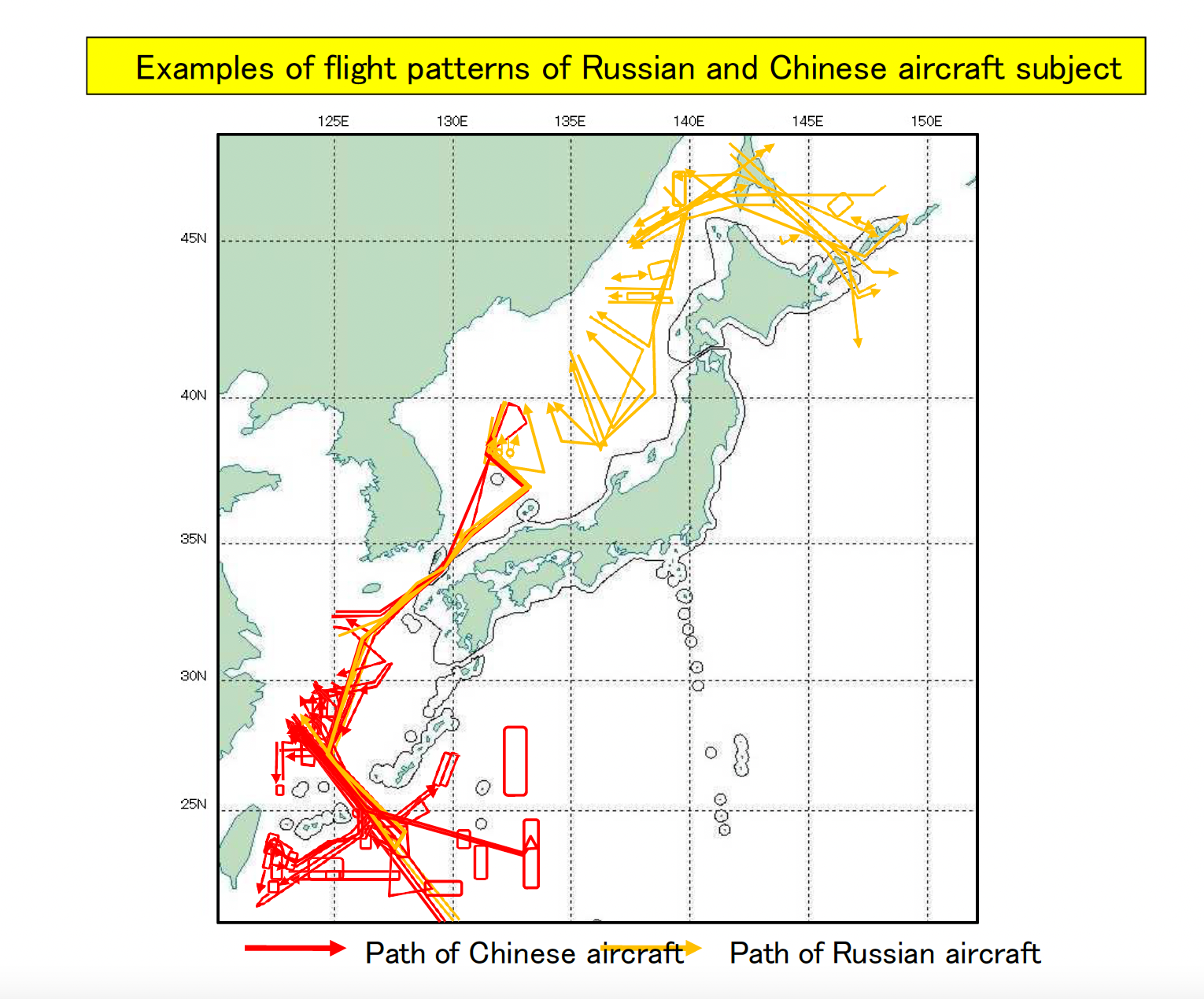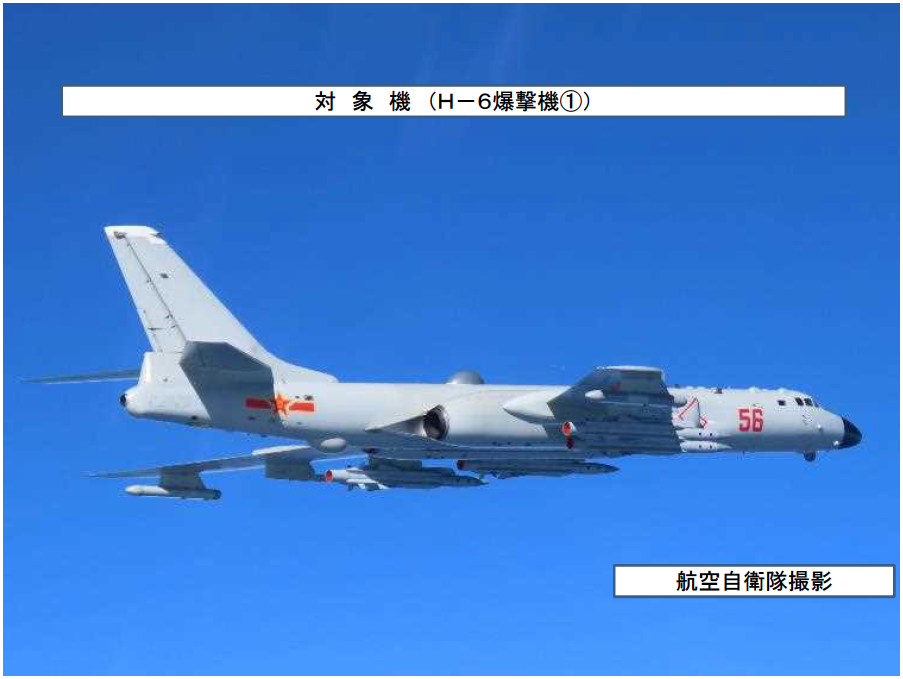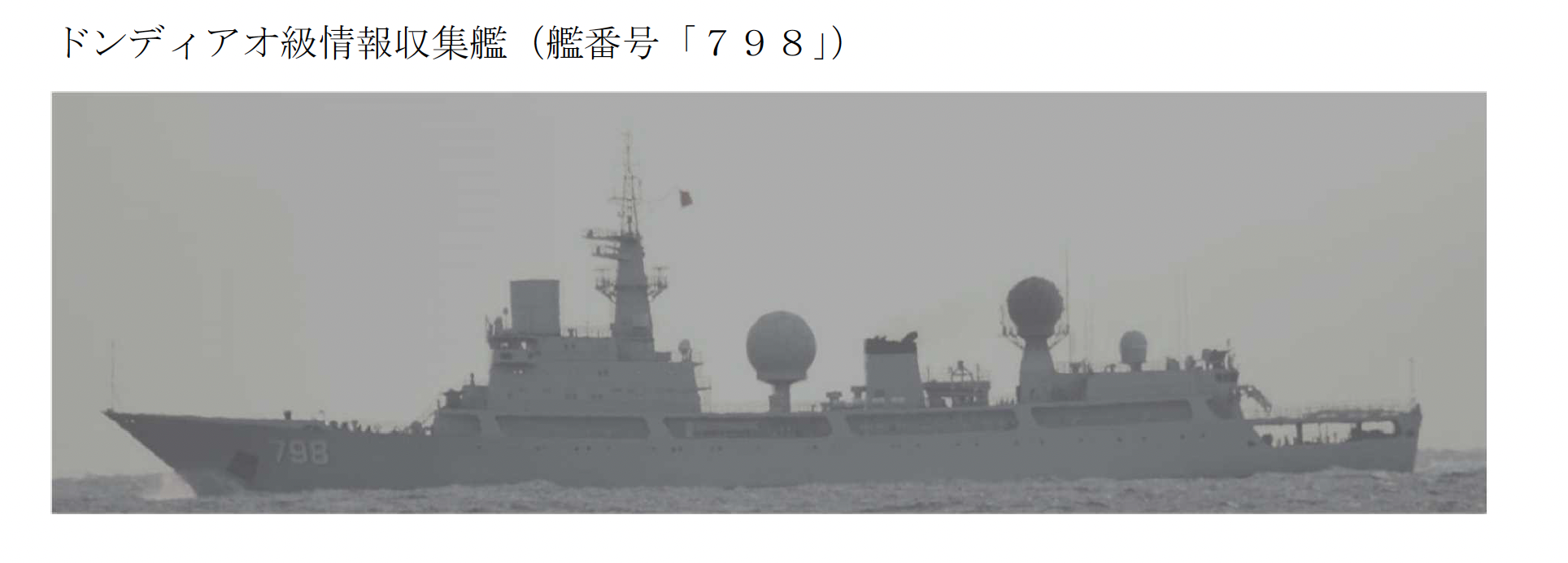
The Japan Air Self-Defense Force carried out a total of 612 fighter scrambles against foreign aircraft by the end of the third quarter of Fiscal Year 2022, a decrease from a total of 785 scrambles in the same period for FY 2021, according to a report released Friday by the Joint Staff Office of Japan’s Ministry of Defense.
Of the scrambles for the FY 2022 period, which covers April 1 through Dec. 31, 75 percent were against Chinese aircraft, 22 percent against Russian aircraft and three percent against other aircraft. Zero scrambles took place against North Korean and Taiwanese aircraft. In FY 2021, the JASDF carrier out three scrambles against Taiwanese aircraft.
Japan’s fiscal year is calculated as beginning on April 1 and ending on March 31 the following year. During the the third quarter of FY 2022, the number of scrambles broken down by area commands was 86 for the Northern Air Defense Command, 21 for the Central Air Defense Command, 91 for the Western Air Defense Command and 414 for the Southwestern Air Defense Command. The larger number of scrambles for the Southwestern Air Defense Command is expected, given that the People’s Liberation Army Navy carrier CNS Liaoning (16) conducted two deployments in the command’s area of responsibility. A number of Chinese aircraft and unmanned air vehicles also conducted operations in the area.
A map in the report showing the flight paths of Russian and Chinese aircraft throughout the third quarter showed that Russian flight activity took place around North East and Northwest Japan, off the west coast of Central and Western Japan, and Southwest and Southern Japan, with a significant number of transits through the Miyako Strait. Meanwhile, Chinese aerial activities were largely concentrated around Southwest and Southern Japan, with a significant number of flight paths transiting through the Miyako Strait to the east coast of Taiwan.

For the third quarter of FY 2022, 462 scrambles took place against Chinese aircraft, in contrast to 571 for the same period in FY 2021, according to the report. Scrambles against Russian aircraft numbered 133 in the third quarter of FY 2022, compared to 199 for the same timeframe period in FY 2021. It was the lowest number since FY 2013.
The report also included 30 instances of Chinese and Russian aircraft activities that were deemed unusual during that third quarter. Eleven were J-15 fighter aircraft launches from Liaoning in May in the Pacific Ocean and another three were J-15 fighter aircraft launches from Liaoning in December. For the December instances, the scrambles took place over a period of several days, while the May instances happened on one specific day.
Two instances were joint flights by Russian Tu-95 and Chinese H-6 bombers, the first occurring on May 24 from the Sea of Japan, through the Tsushima Strait and out to the East China Sea and Pacific Ocean before returning the same way. The second joint flight included Russian Tu-95 and Chinese H-6 bombers flying the same route on Nov. 30, with Chinese fighter aircraft accompanying them on some legs
The remaining instances included Chinese bombers, electronic intelligence aircraft, reconnaissance aircraft and unmanned aerial vehicles (UAVs), in addition to Russian bombers, fighter aircraft, intelligence gathering aircraft and two instances of unidentified Russian aircraft.

On Thursday and Friday, the JSO also issued two news releases on the operations of a Chinese Dongdiao-class surveillance vessel, a Chinese UAV and a Chinese Y-9 surveillance aircraft. At 12 noon local time on Thursday, a Dongdiao-class surveillance vessel was sighted sailing southeast in an area 80 kilometers west of Kume Island, according to the Thursday JSO release. The hull number and image in the release identified the ship as CNS Yuhengxing (798). The PLAN ship then sailed southeast through the Miyako Strait into the Pacific Ocean, while Japan Maritime Self-Defense Force minesweeper JS Toyoshima (MSC-685) and a JMSDF P-3C Orion Maritime Patrol Aircraft of Fleet Air Wing 5 based at Naha Air Base, Okinawa, monitored, according to Japanese military.
In the afternoon of that same day, a Chinese BZK-005 UAV flew from the East China Sea and through the Miyako Strait into the Pacific Ocean, according to a second JSO release issued on Thursday. The UAV then flew over the Pacific Ocean, south of Okinawa, before turning around and flying through the Miyako Strait and back into the East China Sea. JASDF fighter aircraft from the Southwestern Air Defense Command scrambled in response, the Japanese military said.
On Friday morning, A Chinese Y-9 surveillance aircraft flew in from the East China Sea, transited into the Pacific through the Miyako Strait and then flew in a circle in the Pacific Ocean before turning back and flying through the Miyako Strait into the East China Sea, according to a Friday news release from the JSO. JASDF fighter aircraft also scrambled to intercept the Chinese aircraft.





